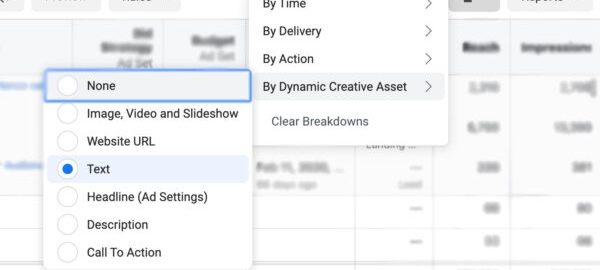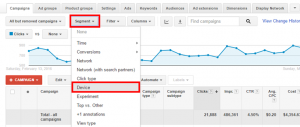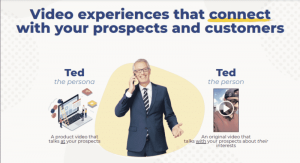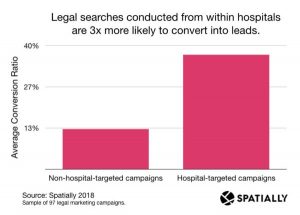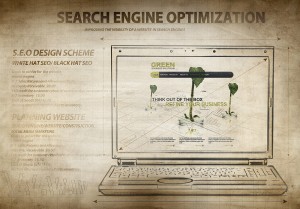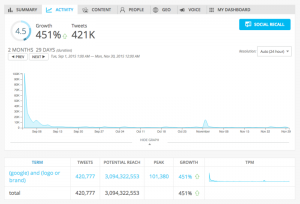Your business is running a Facebook ad campaign but isn’t seeing any sales come in. You know that the platform works because you’ve heard other businesses rave about it, but aren’t sure why your ads aren’t doing the same.
In this article, we will discuss how to set up your ad account tracking, how to understand the reporting dashboard, and how to optimize each part of the sales pipeline.
Using Facebook Analytics to Optimize Your Ad Campaign
- Create your pixels
- Set your reporting columns
- Know your conversion standards
- Review Ads Manager in sections
- Facebook Ad
- Landing Page
- Change one thing at a time
- Tools to use
Create your pixels
The Facebook Pixel is a code that when added to your website, collects your site visitors’ information and activity. Facebook then uses this data to help you understand your audience and find users similar to them, how many conversions you are receiving from your Facebook ads, and how you can improve your ad spend.
Facebook Pixel offers different levels of data pooling allowing you to track everything down to a button being clicked on a webpage. Setting up the Facebook Pixel requires minimal to no coding knowledge, and can be done by you or your web developer.
Base Pixel
The Base Pixel is a general code that is placed across your entire website. This piece of the code will capture data on all of your website visitors regardless of the pages they visit or the actions they take. This Pixel is generally known as “PageView.”
Standard Event Pixel
Standard Event Pixels, pre-made by Facebook, are more defined measurements than the base pixel and help to better understand where your site visitors are dropping off. These pieces of code, things like “Add to Cart” and “Lead,” are added to a specific page, and not the entire website.
Custom Conversions
You can create and use Custom Conversion instead of Standard events if Facebook does not provide an event that matches a step in your sales pipeline.
If you are using Custom Events for a Landing Page service like ClickFunnels, which uses dynamic URLs, create the custom event to fire for that specific event and not based on a URL trigger. You will lose data and not be able to see results in you set it to a URL.
Set your reporting columns
The Reporting Columns in Ads Manager show you the data from your paid campaigns. Facebook offers default reporting column templates based on standard measurements like click-through-rate, and messenger campaigns.
Customizing your reporting column by adding the standard events you created will help you better understand the results you need to see.
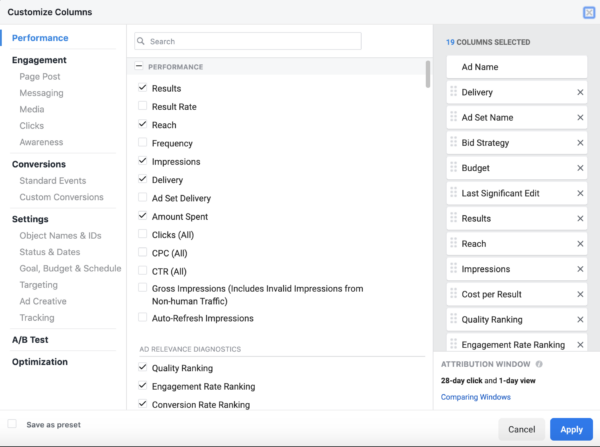
Another benefit of customizing your reporting column is understanding the flow of users on your website or sales funnel. By setting up your reporting column with the events in order, you can see where any major drop-offs occur, something we will discuss more in-depth later in this article.
Know your conversion standards
If you are just getting started with paid ads campaigns, you need to have measurements in place to determine if your campaign is performing well or needs adjustments. Using industry averages will keep you from making unnecessary changes to parts of your sales pipeline. But as always, once you reach the industry average, look for ways you can improve your ad performance even more.
Facebook Metric
A good click-through-rate(CTR) for Facebook ads sits right around 1%. What this means is 1% of people that view your ad click the call-to-action button at the button, sending them to messenger, your website, a Facebook lead form, or a sales landing page.
Landing Page
The average follow-through-rate for a landing page should be around 20%. What this means is 20% of the people that make it to your landing page continue forward to the next step in your sales pipeline, rather it is clicking to the next page on ClickFunnels or taking an action on your website.
Review Ads Manager in sections
Facebook Ad Campaigns can be overwhelming for people who are just starting. It is easy to see your ad is not getting results and either cut the budget completely or make major changes to multiple parts of your sales pipeline. Taking the time to understand your pixels and how to read them in the reporting column with save you both time and money, and reduce unnecessary stress.
Instead of looking at the entire reporting column as one piece, break it down into pieces to better understand where your weak points are, and where visitors are dropping off.
Facebook ad
As we discussed early, 1% CTR is a benchmark for Facebook ads. If you notice fewer people are making it to your landing page, look at fixing one or both of these opportunities.
Audience
The first would be your audience targeting or audience size. Narrowing down your audience by setting target points for age, location, education, and page likes can bring you great results if you are seasoned with Facebook Ads, but sometimes it’s better to give control over to Facebook and let them do the work. By widening your audience, you may begin to reach more of your target audience, increasing your CTR.
Creative
The second fix would be your ad creative, copy, headlines, or call-to-action. As you can see, that’s a lot of opportunities, which is why I test these parts of the ad out one at a time before fully launching an ad campaign.
Pick one part at a time, let’s say the creative for this example, and make 3-4 variations of the photo or video for your ad. The other pieces, copy, headlines, and the offer would be the same for each ad creative option to reduce variables in the test. After three days take a look at which performed best and use the winning creative to now test for the copy. Repeat this process one by one until you know the optimal version of each part of the ad.
To see these results of a specific part of the ad, click on the Ads tab in Ads Manager, and then select the Breakdown. Choose the part of the ad you are testing.
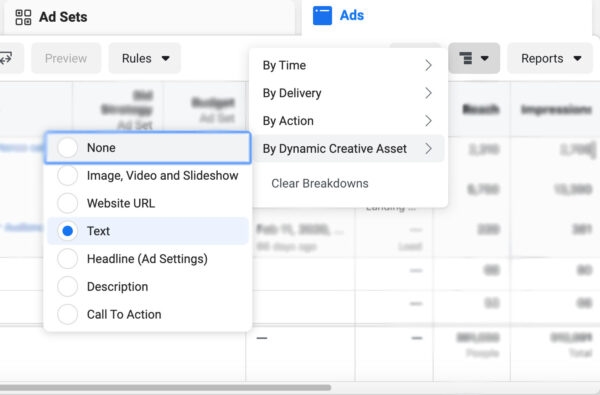
Landing Page
As we discussed earlier, the benchmark for follow-through on your Landing Page is 20%. If you notice fewer people are continuing forward, look at fixing one of these opportunities.
Your Landing Page should match your ad
For e-commerce this is simple, does the ad match the product page users are directed to. For lead generation make sure the Landing Page you create mirrors the ad to avoid any disruption in the users’ attention. A couple of ways to do that are:
- Using the same photo as the ad
- Making the offer the prominent piece of the landing page
Place the offer above the fold
The fold is considered the bottom part of the webpage where your computer or mobile phone cuts things off. Anything you have to scroll to see if below the fold. Placing your call-to-action above the fold will prevent users from losing interest while searching for the offer.
Placing Social Proof where needed
Lead Generation funnels oftentimes rely on testimonials and reviews to further the conversion process. Adding a few testimonials from raving fans will help add assurance to your visitors’ minds.
Change one thing at a time
The most important part of this entire process is understanding that you must treat it as a scientist treats an experiment. By that I mean, only change one variable at a time.
Changing your ad creative, landing page layout, and CTA all at the same time may bring you positive results, but you have no idea why or how you can recreate this in the future.
Good results from one campaign are great, but you want to have an understanding of how each piece works and how to optimize it properly to have continued results on future campaigns.
Follow the flow of the user and make changes in that order. Start with the Facebook ad. If this piece is performing well, move on to the Landing Page and so on.
Tools to use
This free Google Chrome Plug-in reads the back-end of websites and shows you if and which Facebook Pixels are installed. Using this tool will make the installation process easier for your campaign
Creating an effective ad can be a tedious process. Canva provides free creative templates for Facebook ads that look professional.
Facebook ads are an effective way for businesses to find and convert new customers. The Ads Manager platform provides transparency at every stage of the process to ensure your business’s ad budget is optimized to its fullest potential.
You now have a better understanding of how to optimize your Facebook Ad Campaign. Get out there and crush it!
Digital & Social Articles on Business 2 Community
(43)
